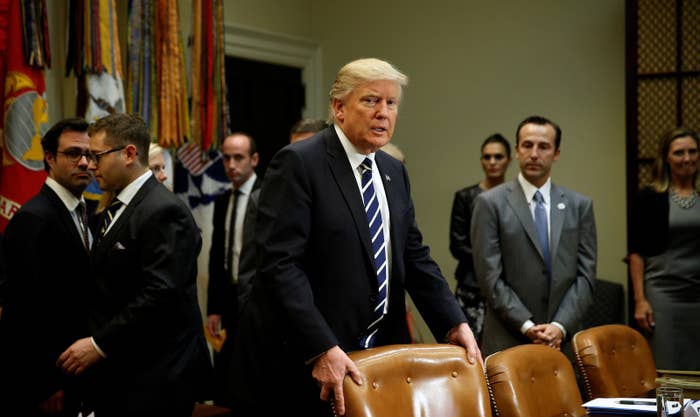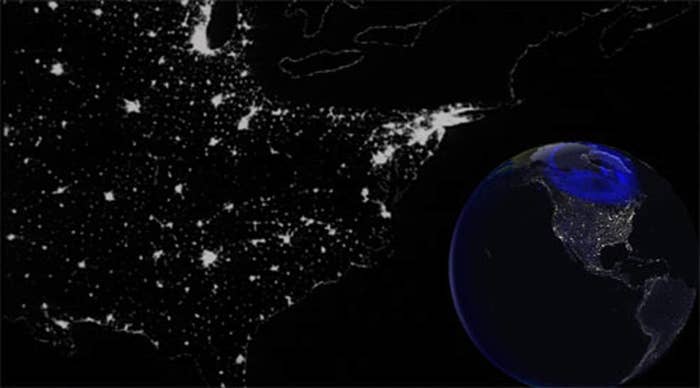
Days ahead of the first presidential caucus in Iowa, Peter Vincent Pry went to the Hawkeye state to brief presidential candidates about his life’s work — preventing a nationwide blackout of the power grid.
Amid the voter rallies and the pancake breakfasts there, he talked to Republican candidates about a threat that worries very few people outside national security circles — that of electromagnetic pulses.
EMPs are bursts of radiation triggered by solar storms, or more worryingly to defense officials, by nuclear explosions. A 1989 solar storm that knocked out Ontario’s power grid, for example, deprived millions of people of power in the midst of a Canadian winter. The US electric grid is still dangerously vulnerable to such surges, warn experts like Pry, executive director of the Task Force on National and Homeland Security, a Congressional advisory board that addresses the threat of EMPs.
Pry said he found in Des Moines a receptive audience in one longshot candidate, Donald Trump.
"He got it,” Pry told BuzzFeed News. “He's a smart guy. He basically said, 'If I'm elected President, I'll knock their heads together and solve this problem.'"
National-security conservatives, most prominently Trump confidant Newt Gingrich, have for years trumpeted the threat of an EMP attack on the electric grid.
"The threat is real, and we as Americans must face that threat, prepare, and know what to do to prevent it," Gingrich wrote in the foreword to "One Second After," a novel about an EMP attack.
The Obama administration’s Energy Department announced $3.9 billion in “smart grid” funding available to the nation’s utilities in 2009, largely for upgrades to defeat normal blackouts and permit home meters to talk back to power companies, but these EMP hawks still warn the overall grid is vulnerable to a knockout punch.
Now under President Trump, who is eager to build infrastructure and appear strong on national security, they may finally have an ally in the White House.
“We will protect our critical infrastructure such as power plants and electrical grids,” Trump told reporters in the Oval Office on Jan. 31. “The electrical grid problem is a problem but we'll have it solved relatively soon.”
That day, Trump was set to issue an executive order on cybersecurity, but the signing was postponed for undisclosed reasons.
Before the cancellation, one White House official said the executive order would instruct the Department of Homeland Security to work with private companies in the electricity business “to provide whatever resources we can to help them protect their systems," according to the White House pool report.
When asked when the president will sign the cybersecurity executive order, the White House did not respond to BuzzFeed News.

Just as nuclear weapons rewrote the rules of war in the 20th century, Pry warned Trump more than a year ago, the ability to infiltrate and cripple computer and electrical networks will shape how nations fight this century.
A single nuclear weapon detonated not in a city but over a rural prairie in the center of the country, like in Iowa, could blackout portions of the US for months. The most famous example is a 1962 “Starfish Prime” nuclear test blast 250 miles above the Pacific Ocean that knocked out power in Hawaii from nearly 1,000 miles away. A paper this year in the journal Space Weather estimated that a solar storm-induced blackout would cost the US $41.5 billion per day.
But critics say that apocalyptic vision is overblown. Any nuclear-armed adversary, they argue, would rather bomb military facilities and cities rather than try to paralyze the grid.
“A weapon of mass destruction is preferable to a weapon of mass disruption,” Yousaf Butt, a physicist then at the Center for Astrophysics at Harvard University, wrote in 2010. “A state would be highly unlikely to launch an EMP strike from their own territory because the rocket could be traced to the country of origin and would probably result in nuclear or massive conventional retaliation by the US.”
Trump has shown a fondness for executive orders to pursue his interests, however, and that avenue allows the president to pick up elements of unfinished grid toughening bills that have stalled in Congress. For years, Rep. Trent Franks of Arizona has pushed legislation that would allow the Federal Energy Regulatory Commission to issue guidance on hardening the grid to these attacks, if national security is at stake, and fix what he sees as a broken regulatory relationship between FERC and private power utilities.
“I know Mr. Trump has been concerned about this for some time,” Franks told BuzzFeed News. “I’d like to think that perhaps some of my own input was part of developing his conviction on the issue.”
Former Energy Department chief Ernest Moniz called modernizing the grid against cyberattacks and hardening it against extreme weather the highest priority for his agency’s national security efforts last year. The low-hanging-fruit fix, Franks said, is retrofitting the nation’s high-voltage transformers, the backbone of the electric grid, with surge protectors. Just as surge protectors on laptop chargers halt the rush of electricity of a lightning strike from frying a computer, these protectors would prevent electrical surges from coursing from transformer and transformer, blacking out portions of the US in a domino effect.
But there are bigger fixes to the electric grid that could not only harden the grid to attack but could also, climate advocates say, improve efficiency and reduce greenhouse gas emissions.
“If you build a secure, as well as a clean, grid, what you’re going to do is make it possible to accomplish both objectives,” John Topping, president of the nonprofit Climate Institute, told BuzzFeed News.
Pitching reduced carbon emissions as a boost to national security may be the most realistic move for the environmental movement under Trump, who said during the campaign he is “not a big believer in man-made climate change.”
Topping’s organization proposes rewiring much of the grid with high-voltage electric lines that run underground and with a direct current, which would allow solar farms in the Southwest and wind turbines in the Great Plains to reach cities with less energy lost along the way.
With such a project, Topping said, “there’s something that is very attractive from an environmental standpoint and it’s attractive to those whose primary concern is going to be security.”
